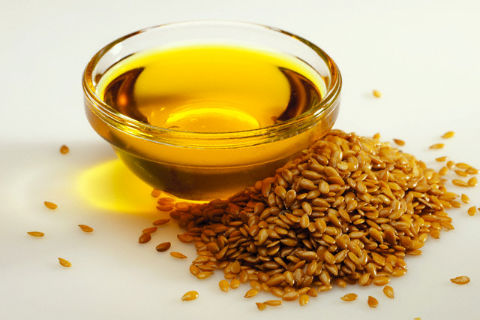Flax Seed Health Benefits and Side Effects

Flax Seed Benefits
1. It is very rich in Omega-3 fatty acids
The Omega-3 fatty acid is known to help the body fight inflammation. It is the most natural defense against heart diseases, arthritis, diabetes, certain cancers, and asthma. Flax seeds are very good sources of ALA, which in turn, is rich in Omega-3 fatty acids.
2. It is a good source of the lignan phytonutrient
Lignans are lesser-known phytonutrients that are found in the fibers of flax seed. It is a very powerful antioxidant that can balance the functions of female hormones. Lignans are known to promote fertility while reducing the instances of peri-menopausal symptoms. It can also fight breast cancer and many other reproductive health diseases.
3. It has high fiber content
Fiber is very essential in promoting good digestion. Incidentally, flax seeds have high contents of soluble and insoluble fiber. Fiber plays a very important role in lowering down one’s cholesterol level while regulating blood sugar and promoting one’s general well-being.
4. It can improve metabolism
A recent study has shown that flax seeds can also prevent the occurrence of metabolic syndromes while keeping a person’s blood pressure to normal. Furthermore, it is also known to control glucose levels. As a result, flax seed can decrease the instances of obesity and effectively prevent weight gain.
Possible Side Effects of Flax Seeds
While the flax seeds benefits are quite impressive, there are a few side effects that have to be noted when taking it as a food product. These are:
1. Gastrointestinal issues
Because of the high fiber content of flax seeds, those who intake it regularly may possibly experience increased bowel movements. When left ignored, the condition may further lead to a slew of other side effects such as bloating, abdominal pain, gas, constipation, stomachache, diarrhea, and nausea.
2. Bleeding
In certain instances, flax seed can slow down blood clotting. Uncontrolled bleeding may occur among people who take too much of it on a daily basis. Anybody who is at the risk of developing bleeding disorders are prohibited from taking flax seed.
3. Heightened triglyceride levels
It was found out that flax seeds with chemically lowered ALA can increase a person’s triglyceride level. This can only mean that flax seed is not for people with an exceptionally levels of such.
4. Diabetes
Flax seed, when taken against diabetes, may actually produce a double-edged sided effect. While lowering down a person’s blood sugar level, it may also reduce the effect of his medications. When taking flax seed, diabetics should always monitor their blood sugar levels.
5. Generally unsafe for pregnant and breast feeding mothers
Mothers who are lactating, are pregnant, or are trying to be, should be well aware of the flax seed’s effect on their estrogen levels. The intake of flax seed during such period may potentially affect their health or their baby’s.

How to take Flax Seeds. Recipes
To maximize the flax seeds benefits, adding it to one’s daily diet is highly recommended. However, being creative with one’s food choices is necessary. It is best to add flax seeds to your meals in order to reap all of their benefits. Here are some good suggestions on how to add flax seeds to everyday dishes:
1. Flax Seed Crackers
Make flax crackers using the usual whole wheat cracker recipe. Simply add a cup of ground flax seed into the batter mix. It is also possible to use 2/3 ground and 1/3 whole flax seed to add more texture to your crackers.
2. Flax Seed Pancakes
Make your pancakes a whole lot healthier by adding a 1/3 cups of coarsely ground flax seed for every 1 and 1/4 cups all-purpose flour. Just follow the instructions of a traditional pancake recipe. You can also add a cup of shredded apple into the mix for added flavor.
3. Flax Fried Rice
Enjoy some real Asian cooking by added flax seeds in your favorite fried rice recipe. Use a quarter of a cup of toasted flax seed for every 2 cups of rice. Don’t forget to add all the goodies, like the ham, mixed vegetables, egg, and green onions. To toast flax seed, baked in an oven with a very low temperature for about 3 to 4 minutes.
4. Flax Seed Muffins
Put a new twist to mom’s old cooking by adding half a cup of ground flax seeds into the usual batter mix. If you want, you can also sprinkle some whole flax seeds on top of the muffin for garnishing.
5. Flax seed breading
To make all those fried dishes healthier, use flax seeds instead of the usual bread crumbs for coating. Use ground flax seeds and combine it with water, flour, salt, pepper, and egg. Mix all ingredients well. Dip fish, meat, or chicken strips into the batter, deep fry, and enjoy its crispy goodness.
Rava
August 20, 2013 @ 11:02 am
Eat cereals with flax seed oil – oatmeal, buckwheat, rice and others. Another option is adding it to vegetable proteins: peas, broad beans and kidney beans. Yet another option is a combination with vegetables, such as carrots, beets, cabbage. Why with beetroot? Because beetroot lowers blood pressure and linseed oil dissolves the cholesterol plaques. As a result, we get a cumulative effect, which is very useful for hypertensive!
buddy
September 23, 2013 @ 1:40 pm
I love to read all the healthy information.I just start to stop smoking and I also want to eat healthy now. Any suggestions or info?
Thank You.
Buddy
Rava
September 24, 2013 @ 1:54 am
Regarding healthy eating here are some quick tips to consider:
1. Strive to increase the proportion of fruits, vegetables, whole grains, legumes and nuts in the diet. 50-60% of all energy should be obtained from this very foods.
2. Avoid fast food, processed meats and foods containing artificial food additives which include ham, sausage, salami etc.
3. Limit energy gains from fats. Saturated fats (as animal fats) should be up to 1/3 of fats consumed, the remaining 2/3 should be unsaturated fats as vegetable oils. Try not to eat foods containing trans-fatty acids.
4. Limit the consumption of simple carbohydrates (sugar, soft drinks) – no more than 30-40 grams per day.
5. Limit salt intake and use only iodized salt.
6. Our body is craving water. If there are no individual contraindications, drink at least 1-1.5 liters of water a day.
7. Don’t overeat.